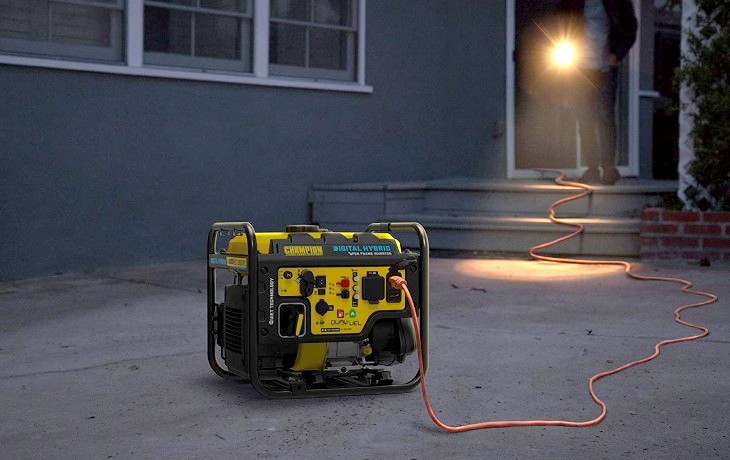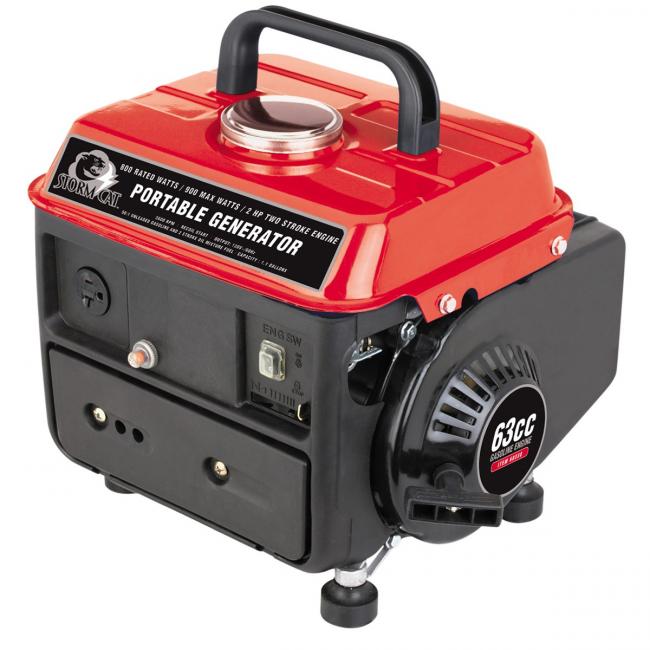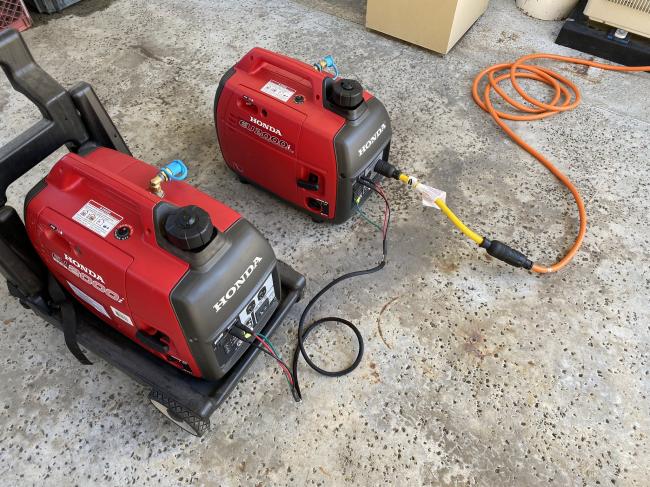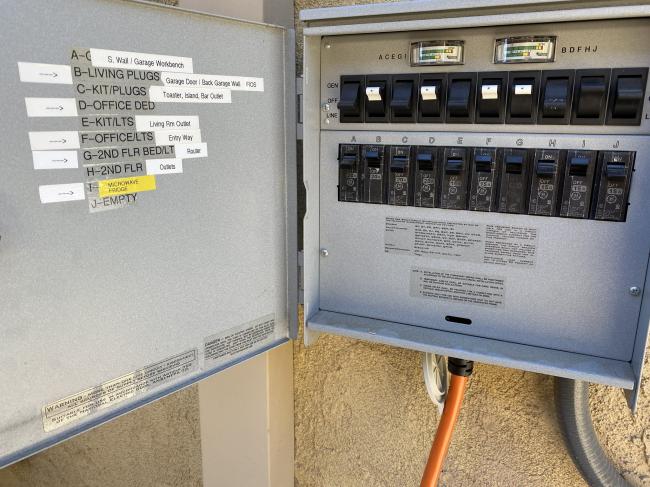Best gas-powered portable generators

-
Comments (14)
-
Steve - February 14, 2021
Capacity planning tip:
I have owned the older model Honda EU2000i for several years. It is a great generator, but I found the single generator can barely handle the startup surge of my basic Whirlpool refrigerator. And it definitely cannot handle a refrigerator when in Eco mode. I had to get the EU2000i Companion generator and pair them in order to handle the high draw of the refrigerator. Together, they work great.
Also, although both of my Honda generators have the very quiet Eco mode, that only works well if you have a stable constant load without large sudden power draws. If both of the Hondas are paired and running in Eco mode, even together they cannot ramp up their RPMs fast enough to handle the refrigerator compressor startup draw, and at least one of the generators will shutdown due to overload when the fridge compressor kicks in.
However, I found that if I keep Eco mode turned OFF for the Companion (full speed), I can keep the main EU2000i in Eco mode, and that configuration can handle the refrigerator startup, or a full size microwave.
Fuel:
Never leave pump gas in your generator while in storage. And definitely read the instructions or learn how to drain the carburetor in your generator to remove all fuel before storage. Also, look into VP Racing Small Engine methanol free fuel. Run some through the generator to flush out the pump gas before you put it away. It’s expensive, but it’s worth the cost to avoid a clogged carb.
Cheaper alternative:
Having spent quite a bit of money on both Hondas (and the propane conversion kits), if I were to do it all over again, I would probably purchase two of the Harbor Freight Predator 2000 generators. From everything I’ve seen and read, they appear to be a great option for the price if you are willing to roll the dice with Harbor Freight.
-
Thomas GomezStaff - February 15, 2021
Hi Steve!
Thank you for the excellent feedback. I am going to take a look at the Harbor Freight Predator 2000 generators and add them to our list of recommended generators.
-
Steve - February 15, 2021
In the Inverter generator category, the Harbor Freight Predator 3500 is also worth a look, with comparison against the Honda EU3000is. The price of the 3500 is very appealing for those who know they need more than 2000 watts and are okay with a 100lb generator.
-
Robert LarsonContributor - February 15, 2021
I’m glad that you’ve found a Harbor Freight generator that you like.
I worked at Harbor Freight for a few years and one of the most common returns was the tiny 800 watt tailgating generator that can usually be had for $70-$90 with a coupon.
I don’t even know if they sell them anymore and it looks like they’ve replaced them with the Predator series.
I’m sure most of the returns were from user error. People trying to power their whole house off it and overloading it, not mixing oil and fuel (I think you had to do that for this model), and it just might not have been the best generator.
-
John AdamaStaff - February 15, 2021
@Robert always interesting to hear that kind of behind-the-scenes intel, thanks.
-
-
Steve - February 20, 2021
Testing the Honda EU2000i and EU2000i Companion today.
Connected to a transfer switch, which can feed most of the house (120V circuits only).
-
Conrad B - February 20, 2021
That is super neat Steve! Thank you for sharing that picture. It doesn’t look hard at all to connect the two generators together. I thought it would be more complicated.
You have to have your house wired to be able to accept power from the generators to your whole house right? How expensive is modifying your house to be able to do that?
-
Steve - February 20, 2021
Connecting the two generators is very simple–just a simple interconnect cable. Looks like the Harbor Freight Predator inverter generators copied the Honda interconnect cable as well.
If you buy a generator (or two) to connect to a transfer switch, make sure to note the max capacity of the receptacle that supplies power from the generator, as well as the max rating of the receptacle and circuits of your transfer switch. In the case of my Honda EU2000i Companion, the NEMA L5-30P receptacle has a max rating of 26.6 amps, with all larger generators that I’ve seen having a max of 30A. If you need more capacity, you’ll want a dedicated whole house generator and automatic transfer switch.
When I upgraded the electrical panel on my house, I had the electrician install the Reliance R310A Pro/Tran 2 transfer switch. It’s a manual consumer-grade model, but it’s plenty adequate for my needs and infrequent use. The electrician only charged me $375 for the transfer switch installation during my panel upgrade, and I purchased the transfer switch on my own.
Getting the transfer switch permitted in my city was a hassle due to my city technically not allowing any surface mount electrical panels. The eventually relented, as there don’t seem to be any flush mount consumer transfer switches available. There is also a complete ignorance of NEC code regarding wire connections inside the electrical panel (required for the add-on transfer switch) from both the city and my electrician, so it took me weeks (and a call to Reliance for confirmation) to convince everyone that the transfer switch was NEC compliant.
If you can find an electrical panel that has an integrated “interlock” transfer switch, that would be the better way to go, but is only practical if you’re upgrading your panel.
Or you can just use a bunch of extension cords like I did for several years before I had the transfer switch installed. It’s a hassle, but it’s simple.
-
-
Peter 44 - November 13, 2021
Energy conservation is an important skill to develop and practice now. During a hurricane when you are running your house off of a generator even though it can handle the load of your daily life, you may not want to continue living life like normal and turn on every appliance and light on in the house because it will just consume more power and fuel.
- Turn off lights, computers, and appliances when not in use. Better yet, unplug what doesn’t need to be powered on.
- Wash clothes in cold water and only do full loads.
- Use the light or quick cycle of your dishwasher and only run when full. When they are done washing, open the dishwasher door to allow them to air dry.
- Switch to LED light bulbs
- Use a non-cordless telephone if using a landline as those usually will still work when the power is out.
- Keep the refrigerator as full as possible. Empty space uses more power. Keep the door shut as much as possible.
Some other tips. Rotate your stored fuel, test your generator before the storm, and maintain it regularly.
-
M. E.Contributor - December 17, 2021
There’s a well-written and thought-provoking piece on NBC News today about the risk of carbon monoxide poisoning from generators and what could be done about it. I have held off buying a fossil-fuel powered generator for years because of this very concern. I immediately contacted the Ryobi brand mentioned in the article to ask about how to buy their low-carbon-monoxide model and OBVIOUSLY their company was not prepared for this article coming out!
I could talk you through the hilarious ride I had through their call center but suffice it to say I still haven’t identified which model I can buy that actually has that feature. If I do I’ll post it here. In the meantime I’ll have to be satisfied with my hoard of carbon monoxide-less Jackerys. I’ve sent this NBC article to all of my friends who have generators and will pray that they pay attention. Will also be buying a carbon monoxide detector for my parents since their neighbors have a HUGE generator just a few feet from my parents’ windows.
-
Gideon ParkerStaff - December 17, 2021
Thank you so much for sharing this article! I just read it and it is very well done on explaining the dangers of carbon monoxide poisoning. Always have one or two carbon monoxide detectors with your generator. It’s good that some models are implementing onboard kill switches if high enough levels are detected, but have some redundancy, your life is worth it.
-
-
Gideon ParkerStaff - December 21, 2021
I came across this ALP propane generator.
https://www.youtube.com/watch?v=Rv1OxYGcO44
850w running, 1000w surge, weighs 29lbs, runs for 60 hours at 1/4 load on a 20lb tank, and 3 hours on a 1lb tank, runs at 51-56 decibels, and you can run these in parallel which is nice.
I see this as a good generator for those who want a clean burning easy to maintain generator. The propane leads to little hassle and mess to worry about.
-
Gideon ParkerStaff - January 29, 2022
Video on how to easily install a transfer switch to direct power from your generator to your furnace or other circuit in your house.
-
Gideon ParkerStaff - February 11, 2022
Avoid using this male-to-male cable to use your generator to backfeed your house. It is illegal and potentially dangerous.
-


